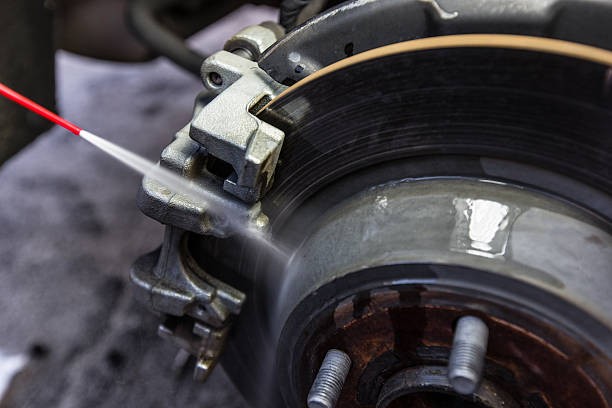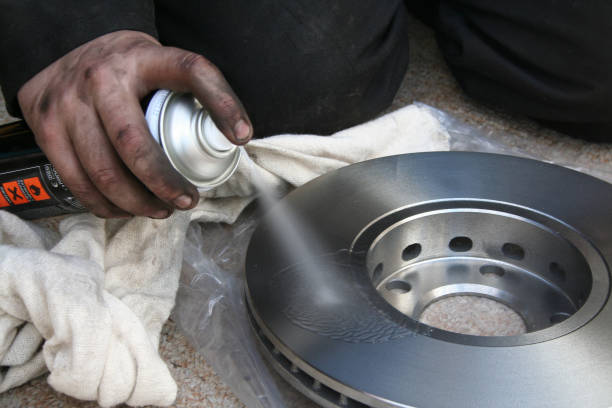Yes, brake cleaner is toxic due to its chemical composition, which can cause health issues like dizziness, respiratory irritation, and skin damage. Prolonged exposure may lead to more severe effects, including organ damage or cancer. Always handle it with care, use protective gear, and ensure proper ventilation.
Brake cleaner is a common solvent used by mechanics and automotive enthusiasts to remove grease, oil, and other contaminants from brake components. Its effectiveness in dissolving tough residues makes it an indispensable tool for maintaining vehicle safety. However, questions about its toxicity often arise, particularly for those who handle it regularly.
In this article, we’ll explore the chemical composition of brake cleaner, its potential health hazards, best practices for its safe use, and alternative solutions.

Contents
Why Is Brake Cleaner Toxic?
The toxicity of brake cleaner arises from its volatile organic compounds (VOCs) and other chemicals, many of which can have harmful effects when inhaled, ingested, or absorbed through the skin. Let’s examine the specific risks:
- Inhalation Risks:
- Chlorinated solvents like PERC and TCE are known to cause dizziness, headaches, and central nervous system (CNS) depression with prolonged exposure.
- Non-chlorinated brake cleaners release VOC vapors that irritate the respiratory system and, in severe cases, may cause shortness of breath or chemical pneumonia.
- Skin and Eye Contact:
- Direct contact with brake cleaner can result in skin irritation, redness, or chemical burns. Prolonged exposure can lead to dermatitis.
- If the liquid gets into the eyes, it can cause severe irritation, damage, or even blindness in extreme cases.
- Carcinogenic Potential:
- PERC and TCE, common in chlorinated brake cleaners, are classified as probable human carcinogens by the International Agency for Research on Cancer (IARC). Prolonged or repeated exposure increases the risk of cancer.
- Environmental Concerns:
- VOCs contribute to air pollution and smog formation. Improper disposal of brake cleaner can contaminate soil and water sources, harming wildlife and ecosystems.
Health Effects of Brake Cleaner Exposure
Exposure to brake cleaner can cause a range of acute and chronic health effects, depending on the duration and intensity of contact. Below are some key symptoms:
- Acute Effects:
- Dizziness
- Nausea
- Headaches
- Eye and throat irritation
- Difficulty breathing
- Chronic Effects:
- Liver and kidney damage from prolonged exposure to chlorinated solvents
- Neurological disorders, including memory loss and cognitive impairment
- Increased risk of cancer with repeated exposure to carcinogenic chemicals
Best Practices for Safe Handling of Brake Cleaner
To minimize the risks associated with brake cleaner, it is essential to follow these safety guidelines:
- Ensure Proper Ventilation:
- Always use brake cleaner in a well-ventilated area. If working indoors, use exhaust fans or open windows to disperse fumes.
- Wear Protective Gear:
- Use nitrile or neoprene gloves to protect your hands from chemical exposure.
- Wear safety goggles to shield your eyes from splashes.
- Consider a respirator with an organic vapor cartridge if you’re working in an enclosed space.
- Avoid Direct Contact:
- Do not use brake cleaner as a general-purpose degreaser on your skin or clothing.
- Wash your hands thoroughly with soap and water after handling.
- Store Safely:
- Keep brake cleaner in its original container and store it in a cool, dry place away from heat sources or open flames. Ensure it is out of reach of children and pets.
- Dispose Responsibly:
- Dispose of used brake cleaner and empty containers according to local hazardous waste disposal regulations. Do not pour it down drains or discard it in regular trash.

Alternatives to Brake Cleaner
For individuals concerned about the toxicity of traditional brake cleaners, safer alternatives are available:
- Eco-Friendly Brake Cleaners:
- Many manufacturers now offer biodegradable and non-toxic brake cleaning products. These alternatives reduce health and environmental risks while maintaining cleaning efficiency.
- Household Solutions:
- A mixture of soap, water, and isopropyl alcohol can sometimes be used for light cleaning tasks. While less effective for heavy-duty grease, these solutions are safer for personal and environmental health.
- Steam Cleaning:
- Steam cleaners can be a chemical-free alternative for degreasing brake components. This method is effective but may require more time and effort.
Frequently Asked Questions
Here are some FAQs about is brake cleaner toxic –
Is brake cleaner safe to use at home?
Yes, but only with proper precautions. Ensure good ventilation, wear protective gear, and follow the manufacturer’s instructions to minimize risks.
Can brake cleaner damage car parts?
Brake cleaner is generally safe for most metal and plastic parts but can damage painted surfaces, rubber components, and certain coatings. Always test on a small area first.
What should I do if I’ve inhaled too much brake cleaner?
Move to fresh air immediately. If symptoms like dizziness or difficulty breathing persist, seek medical attention.
Is non-chlorinated brake cleaner completely safe?
No, while non-chlorinated cleaners are less toxic than chlorinated ones, they still pose risks like skin irritation, respiratory issues, and flammability.
How can I dispose of used brake cleaner?
Collect it in a sealed container and take it to a hazardous waste disposal facility. Never pour it down the drain or dispose of it in regular trash.
Conclusion
Brake cleaner is an indispensable tool for maintaining the performance and safety of brake systems, but it comes with significant health and environmental risks. Knowing its chemical composition and potential dangers is important for safe use.
By following best practices, using appropriate protective equipment, and considering eco-friendly alternatives, you can mitigate risks and ensure safety. Always handle brake cleaner responsibly to protect yourself, others, and the environment.